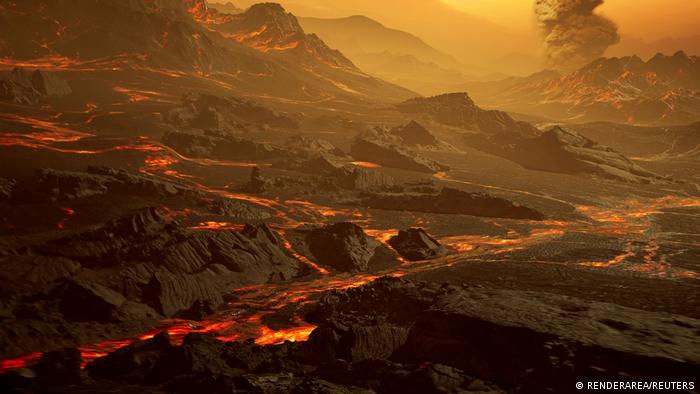Say ‘Hello’ to the Newest Super-Earth

Combining transit and radial velocity data, researchers have discovered a super-Earth exoplanet — called Gliese 486 b — in orbit of a nearby red dwarf star Gliese 486, according to a new study published in the journal Science.
Since it’s only 8.1 parsecs (roughly 26.4 light-years) away from Earth, Gliese 486 b is the third-closest transiting exoplanet yet — in addition to the closest one transiting a red dwarf star whose mass is known.
This makes it a perfect candidate on which to search for an atmosphere, and, if there, study the atmosphere’s habitability.
Say ‘hello’ to the newest super-Earth
“Gliese 486 b is not hot enough to be a lava world,” wrote Trifon Trifonov and colleagues in an embargoed press release shared with Interesting Engineering (IE). “[B]ut its temperature of ~700 Kelvin makes it suitable for emission spectroscopy and phase curve studies in search of an atmosphere.”
Typically, exoplanets are discovered via one of two indirect methods of observation: First is transit photometry — which involves monitoring a star for subtle variations in a star’s brightness that points to a planet passing between the star and us. The other primary method is called Doppler radial velocity (RV), which looks at the star for signs of “wobbling” from the gravitational pull of other planets — like two friends holding hands and spinning in a park, where one is much bigger than the other.
Each method has enabled the discovery of several extra-solar worlds, but individually, the methods can only give limited information about a planet’s physical properties. But in rare cases where an exoplanet may be detected via both techniques, astronomers have learned much.
When both transit and RV methods apply, observers can learn a planet’s mass, radius, and density. This is what Trifonov and colleagues did, and have detected the super-Earth exoplanet Gliese 486 b. It’s terrestrial, has an incredibly short orbital period (or year) of 1.467 days to travel around Gliese 486.
Super-Earth 486 b could show us what signs point to habitable planets beyond the solar system
The hot rocky planet is slightly larger than the Earth (roughly 1.3 times Earth’s radius) — but has twice our planet’s mass (roughly 2.81 Earth masses). Gliese 486 b also possesses a similar density to Earth, which means its composition is likely similar to our planet’s.
Additionally, Gliese 486 b has an equilibrium temperature of roughly 700 Kelvin — slightly cooler than Venus and amenable to transmission and emission spectroscopy. Considering its proximity to Earth and its bright and highly-visible profile to telescopes around the world, forthcoming studies may offer crucial insights into the atmospheric properties — and the habitability — of the newly-discovered planet beyond our solar system.
Super-Earths are typically two to 10 times the Earth’s mass and up to twice its radius — which places Gliese 486 b on the lower end of the spectrum and closer to Earth in mass than most. Even with a habitable atmosphere, the mass of the planet could make its surface gravity too strong for human bodies. But regardless, learning more about a potentially habitable super-Earth’s atmosphere could bring us one logical step closer to understanding how fully-habitable exoplanets work, and what signs to look for.
(This story has not been edited by DCNepaL staff and is published from a feed by Interesting Engineering)
Facebook Comment
latest Video
Trending News
- This Week
- This Month

















